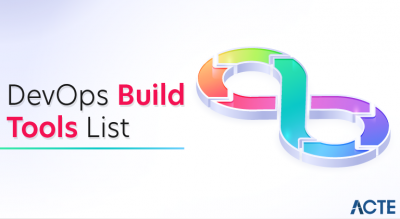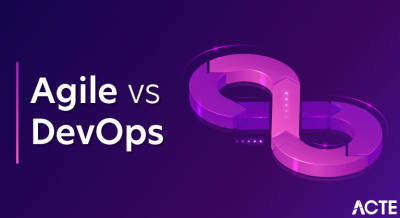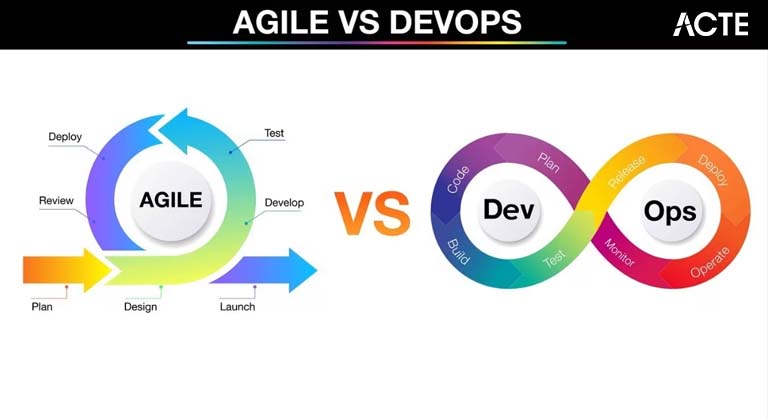
- Introduction to DevOps and Agile
- Key Principles of Agile
- Key Principles of DevOps
- Agile Development Life Cycle
- DevOps Deployment Pipeline
- Comparison Based on Methodology
- Tools Used in DevOps and Agile
- Benefits and Challenges of Agile
- Benefits and Challenges of DevOps
- When to Choose Agile vs DevOps?
- Case Studies of Agile and DevOps Implementation
- Conclusion
Introduction to DevOps and Agile
In today’s fast-paced software development world, organizations are increasingly adopting Agile and DevOps practices to streamline workflows, enhance collaboration, and improve the quality of their products. While Agile and DevOps share some similarities, they are distinct approaches with unique focuses, processes, and goals. Agile primarily emphasizes flexibility and iterative development, while DevOps aims to bring development and operations teams together to improve the efficiency and speed of software delivery. Agile and DevOps both aim to improve software development cycles, but they address different aspects of the process. Agile focuses on the flexibility, collaboration, and iterative progress of development teams, while DevOps focuses on automation, continuous integration, and cooperation between development and operations teams. Together, these two approaches can significantly improve software products’ speed, quality, and reliability.
Key Principles of Agile
- Customer Collaboration Over Contract Negotiation: Agile encourages continuous collaboration with the customer or stakeholders to ensure the product meets their evolving needs and expectations.
- Responding to Change Over Following a Plan: Agile embraces change, allowing teams to adapt to new requirements or market conditions during development rather than strictly following a predefined plan.
- Working Software Over Comprehensive Documentation: Agile prioritizes delivering functional software frequently over creating exhaustive documentation that may not always be needed.
- Individuals and Interactions Over Processes and Tools: Agile emphasizes the importance of skilled, collaborative teams and effective communication over rigid processes or reliance on specific tools.
- Iterative Development: Development is broken into small, manageable chunks (sprints), each delivering a potentially shippable product increment.
- Simplicity: Focus on simplicity, delivering only what is necessary and removing unnecessary features and tasks.
- Continuous Improvement: Agile promotes regular retrospectives to identify areas for improvement and refine development practices.
Key Principles of DevOps
- Collaboration and Communication: DevOps fosters strong collaboration between developers, IT operations, and other departments. Communication is a critical element for breaking down silos and achieving shared goals.
- Automation: A core principle of DevOps is automating repetitive tasks such as code integration, testing, and deployment. Automated pipelines ensure faster and more reliable software delivery.
- Continuous Integration and Continuous Delivery (CI/CD): CI/CD practices allow for frequent code integration and seamless delivery of new features or bug fixes to production, improving speed and minimizing errors.
- Infrastructure as Code (IaC): IaC involves managing and provisioning infrastructure through code rather than manual configurations, allowing teams to automate the setup and management of their environments.
- Monitoring and Feedback: Continuous monitoring of applications and systems ensures real-time feedback and insights into performance and operational issues, leading to faster resolution and improvement.
- Shared Responsibility: DevOps emphasizes shared responsibility between development and operations teams to ensure that both sides are accountable for the quality and stability of the product.
- Scalability and Resilience: DevOps practices are designed to ensure that applications are built for scalability, high availability, and resilience in production environments.
- Cycle Time: Short, iterative cycles with frequent releases.
- Focus: Prioritizes iterative development, customer feedback, and adaptability.
- Team Structure: Teams are cross-functional, strongly focusing on collaboration between developers, business stakeholders, and quality assurance teams.
- Development Approach: Emphasizes flexibility and responding to change during the development process.
- Cycle Time: Frequent and faster delivery of features, updates, and fixes.
- Focus: Prioritizes collaboration between development and operations teams to automate workflows and improve the software delivery pipeline.
- Team Structure: DevOps teams typically consist of both developers and operations professionals working together, breaking down traditional silos.
- Development Approach: Focuses on continuous integration, delivery, and infrastructure automation.
- Jira: A popular tool for managing Agile projects, tracking tasks, and organizing sprints.
- Trello: A more straightforward tool for visualizing tasks and progress using boards, lists, and cards.
- Asana: A project management tool that supports Agile methodologies with features for tracking tasks, timelines, and workflows.
- Jenkins: A widely used tool for continuous integration and delivery (CI/CD).
- GitLab: A DevOps platform integrating version control, CI/CD, and project management.
- Docker: A containerization platform used to build, ship, and run applications in isolated environments.
- Kubernetes: A container orchestration platform for automating containerized applications’ deployment, scaling, and management.
- Ensuring high customer satisfaction through continuous engagement and regular updates is a priority.
- You need a flexible, customer-driven approach with frequent updates and iterations. Your project is in a dynamic environment where customer needs change rapidly.
- Rapid feedback and the ability to adapt to changes are essential. The project scope is expected to evolve over time based on stakeholder input.
- Maintaining high uptime and reliability by addressing issues quickly through automated workflows is crucial.
- The focus is on automation, continuous delivery, and collaboration between development and operations teams. The goal is to improve software quality and stability through consistent monitoring and testing.
- You aim to streamline integration between development and operations for better productivity. Reducing manual tasks and human errors through automation is essential.
- A consistent and repeatable process is needed across environments for smoother transitions from development to production.
- Background: Spotify, a music streaming platform, adopted Agile to foster innovation and better respond to customer feedback.
- Approach: Spotify uses the Squad model, where autonomous teams (Squads) focus on specific features. Teams follow Agile methodologies like Scrum to iterate quickly and prioritize high-value features.
- Outcome: Faster release of new features. Continuous adaptation to user needs. Improved collaboration across teams, ensuring a flexible and responsive product development process.
- Background: Netflix needed to scale its infrastructure and improve software deployment efficiency to support millions of users.
- Approach: Netflix embraced DevOps by automating continuous integration (CI) and continuous delivery (CD) pipelines. They also employed chaos engineering to proactively test the resilience of their systems.
- Outcome: Faster deployment with multiple releases per day. Enhanced scalability to handle massive global demand. Increased system resilience and uptime, even during system failures.
- Background: Target’s e-commerce platform required agility to meet changing customer demands while maintaining high-quality software.
- Approach: Target implemented Agile for iterative development and DevOps for automating testing, deployment, and monitoring processes.
- Outcome: Reduced time to market for new features. Improved collaboration between development and operations teams. Enhanced customer experience through rapid feature updates.
- Background: eBay faced challenges with scaling and delivering continuous updates.
- Approach: eBay adopted DevOps principles, focusing on automation, CI/CD, and close collaboration between dev and ops teams.
- Outcome: Quicker and more reliable software delivery. Improved platform reliability through automated monitoring. Enhanced productivity due to streamlined workflows.
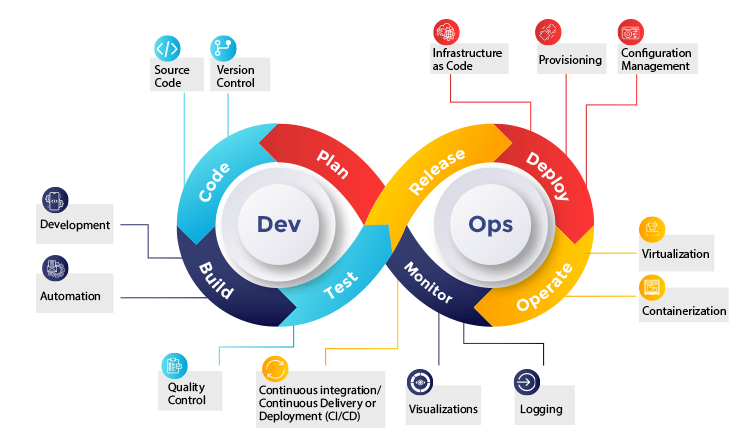
Agile Development Life Cycle
The Agile Development Life Cycle (ADLC) is an iterative approach to software development, focusing on the incremental delivery of a functional product. The process begins with the Concept phase, where the project’s goals, objectives, and scope are defined, and the business case is evaluated. In the Inception phase, the project team is formed, initial requirements are gathered, the development environment is established, and resources are allocated to kickstart the project. The project is then broken down into iterations, known as Iteration/Increment Planning, where each sprint, typically lasting 2–4 weeks, has clear objectives to achieve. During the Design and Development phase, the product’s features are prioritized, developed, and tested within the sprint cycle. This continuous development is accompanied by Testing, ensuring that the product consistently meets requirements, functions as expected, and is free from defects. At the end of each sprint, a potentially shippable product increment is released in the Release phase, which could be a new feature, update, or bug fix ready for production. Afterward, the team holds a Review and Retrospective session to assess whether the product meets stakeholders’ expectations and identify areas for improvement in the next sprint. Finally, the Maintenance phase ensures that bugs are addressed and the product evolves based on user feedback, keeping it up to date and functional after deployment. This iterative process ensures continuous delivery and refinement of the product throughout its development life cycle.
DevOps Deployment Pipeline
A DevOps deployment pipeline is an automated workflow that facilitates the movement of software from development to production, ensuring consistency and minimizing manual intervention. The process begins with Source Control, where developers commit their code to a version control system, such as Git. The pipeline monitors these changes and triggers the subsequent stages automatically. The next step is Build, where the code is automatically compiled into executable files or containers. This build automation guarantees consistency and efficiency across environments. Following the build process is the Test stage, where automated tests ranging from unit tests to integration and end-to-end tests are executed to ensure the code’s correctness and functionality. Once the tests pass successfully, the application moves to the Deploy stage, where it is deployed to a staging environment for further validation. If all tests in the staging environment are successful, the application is then deployed to the production environment. The final stage in the pipeline is Monitor, which involves continuous monitoring of the application’s performance in the production environment. This ensures that the application runs smoothly and that any issues are quickly detected and resolved. The DevOps pipeline streamlines the development process, ensuring efficient, reliable, and continuous delivery of software, while also enabling teams to address issues proactively, ultimately improving the software lifecycle and user experience.
Comparison Based on Methodology
Agile Methodology:
DevOps Methodology:
Tools Used in DevOps and Agile
Agile and DevOps use various tools to facilitate development, collaboration, and automation. Below are some commonly used tools:
Agile Tools:
DevOps Tools:
Benefits and Challenges of Agile
Agile development offers several key benefits that make it an attractive approach for many teams. Flexibility is one of its main advantages, as Agile allows teams to adapt quickly to changing requirements and prioritize the most valuable features at any given time. This adaptability ensures that the product evolves in response to real-world needs and shifts in business goals. Another significant benefit is Customer Satisfaction, as Agile emphasizes continuous feedback from stakeholders throughout the development process. This ensures that the product consistently meets customer expectations, making adjustments as necessary to align with their needs. Additionally, Faster Time to Market is achieved through short, iterative cycles, allowing teams to deliver functional products more quickly and frequently, which accelerates the overall development timeline and provides quicker value to users. However, Agile also comes with its own set of challenges. One common issue is Scope Creep, where continuous changes and new requirements can lead to uncontrolled expansion of the project scope, potentially derailing timelines and increasing complexity.
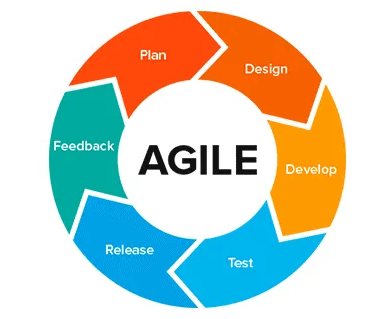
Additionally, Agile demands significant Discipline; teams must adhere to well-defined processes and frameworks to ensure smooth progress. Without this discipline, the benefits of Agile can be lost. Furthermore, Agile can be Resource Intensive, as it requires frequent communication, collaboration, and coordination among team members and stakeholders, potentially straining resources and requiring careful management to prevent burnout or inefficiencies. Despite these challenges, the Agile approach offers significant advantages in terms of flexibility, customer satisfaction, and speed.
Benefits and Challenges of DevOps
DevOps offers several key benefits that enhance the software development and deployment process. Faster Delivery is one of the most notable advantages, as automation and CI/CD (Continuous Integration/Continuous Delivery) pipelines enable quicker, more reliable releases. This ensures that software updates are delivered to users more rapidly, improving overall time to market. Another benefit is Improved Collaboration, as DevOps promotes closer cooperation between development and operations teams. This collaboration leads to more effective problem-solving and streamlined workflows. Increased Efficiency is another significant benefit of DevOps, as automation reduces manual tasks and the likelihood of errors, ultimately making the entire process more efficient and productive. However, adopting DevOps also presents some challenges. One of the major hurdles is the Cultural Shift required within organizations. DevOps demands significant changes in team dynamics and organizational culture, moving away from siloed roles and fostering a more integrated approach to development and operations. Additionally, implementing and maintaining CI/CD pipelines, automation, and monitoring systems can be Complex. This complexity can pose challenges for teams that are new to DevOps practices or lack the necessary resources and expertise. Finally, Security Concerns arise from the frequent deployment cycles inherent in DevOps. If not carefully managed, these rapid deployments can introduce security risks, particularly if security measures are not integrated into the CI/CD pipeline. Proper oversight and secure coding practices are essential to mitigate these risks.
When to Choose Agile vs DevOps?
Choose Agile if:
Choose DevOps if:
Case Studies of Agile and DevOps Implementation
Agile Implementation – Spotify:
DevOps Implementation – Netflix:
Agile and DevOps – Target:
DevOps Implementation – eBay:
Conclusion
Both Agile and DevOps offer distinct benefits in modern software development. Agile emphasizes flexibility, collaboration, and iterative progress, making it ideal for customer-driven projects. Its focus on continuous feedback and frequent iterations ensures teams can quickly adapt to evolving requirements, delivering high-quality products that align with customer needs. In contrast, DevOps focuses on automation, collaboration between development and operations teams, and continuous delivery. It’s perfect for organizations prioritizing rapid deployment and operational efficiency. By automating tasks like testing, integration, and deployment, DevOps accelerates software delivery and ensures smoother, more reliable releases. While Agile enhances responsiveness to customer feedback, DevOps ensures that software is deployed quickly and consistently. Understanding when to leverage each methodology, or even combining them, can lead to faster, higher-quality development, reduced costs, and improved customer satisfaction.


